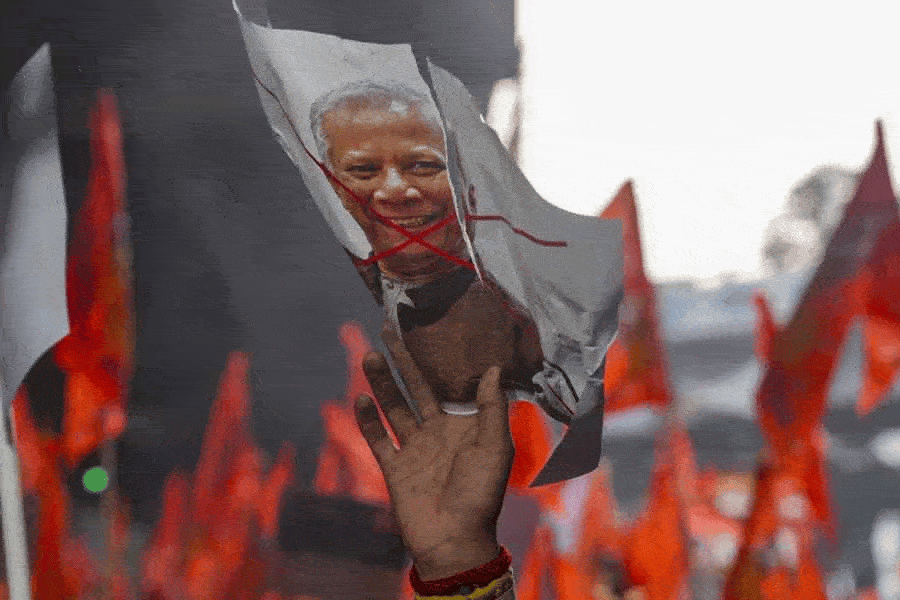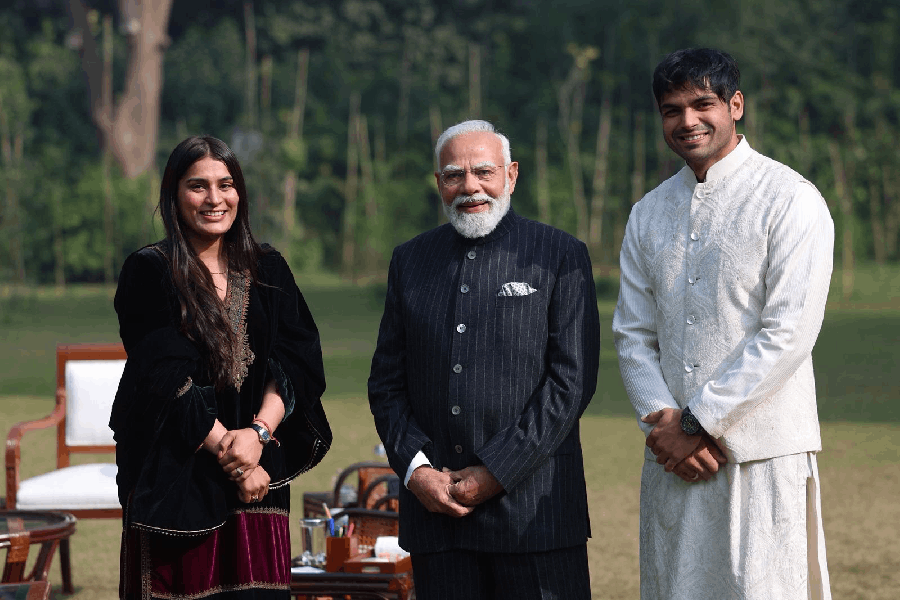 |
| WE’LL MISS YOU: Geoffrey Moorhouse’s Calcutta (inset) remains a classic |
Geoffrey Moorhouse lal salaam
BBC Radio last week paid tribute to the late Geoffrey Moorhouse, whose Calcutta remains the most readable book on the city, to my mind, even though it was published as far back as 1971 (it even has a picture of a youthful looking Jyoti Basu).
Moorhouse was a gifted feature writer on The Manchester Guardian, but gave up journalism to become the author of several regarded books, among them Om: An Indian Pilgrimage (1993).
But I like Calcutta best, for Moorhouse somehow caught the spirit of the city and wrote about its people with candour and humour. The red dust jacket of my copy is a bit tattered but there is a sort of timelessness about the city which Moorhouse found “a monstrous place but a place of marvels too”.
Exploring publications on a Calcutta pavement, for example, he found one with the following dedication: “To the Memory of my Beloved Cousin Chirantan Bhattacharya, a Sergeant of Calcutta Police Knocked down Dead by a Fleeing Lorry on 28 October 1965.”
Moorhouse, who died last month, aged 77, was the subject last week of a BBC Radio 4 obituaries programme, Last Word, in which the presenter, Matthew Bannister, gathered affectionate recollections from his partner, Susan Bassnett, and friends and fellow writers Jan Morris and Matthew Engel.
Moorhouse, an “artist-journalist”, appeared at home in Calcutta.
“There are far more poets in this city than there are novelists in Dublin, and a much bigger difference is that in Calcutta the writers have usually at least put pen to paper,” he noted.
Maybe he had Presidency College in mind when he observed that education “has been prized in Bengal more obviously than in other parts of India. Calcutta University… is almost certainly headquarters for the most aggressive student population on earth.”
Commenting on the business empire of the Calcutta-based Birlas, he wrote about “the discovery of a possession” which “somehow signifies their real wealth more than any calculation of rupees”.
“It is an ice-skating rink, insulated frigidly from a normal temperature of 100 degrees in the shade,” he revealed.
 |
| LOCAL FLAVOURS: Vogue from (clockwise from top left) China, UK,Russia, France, India and the US |
In Vogue
A fit subject for a PhD dissertation is to compare and contrast Vogue India, where Shah Rukh Khan and Kajol made the cover of the October issue, I notice, with Vogue in other countries.
Since this is Christmas, it is also a good time to examine the magazines for new ideas. Each Vogue is distinct and autonomous, I am told by Conde Nast, the publishers, but since the standing of a global brand is involved they all have to maintain a high standard.
There are 17 editions of Vogue internationally and 2010 will see the launch of Vogue in Turkey. America, which has the “most commercial Vogue”, led the way, launching what would become “the bible of the fashion industry” in 1892.
British Vogue followed in 1916. French Vogue, considered “the edgiest”, launched in 1920, Russia in 1998, China in 2005, and India in the autumn of 2007.
The family expert on fashion (my wife) considered the French Vogue “outrageous, flamboyant and provocative”; the American “vibrant, colourful and fun”; the British “more relaxed, modern, but also spiky, more daring than the French”; the Chinese “the fattest issue, with lots of European influence and hardly any Chinese models”; the Russian “elegant, restrained, unusual”; and the Indian had “lots on the family, starlets, European inspiration, fabulous jewellery, party scene, wealth and glitz”.
Sonia Gandhi turned down the chance to be photographed for US Vogue by Annie Leibovitz. Maybe Vogue India should occasionally risk getting away from the usual Bollywood suspects and try, say, Priyanka Gandhi or even Mamata. The latter probably spends a lot of time affecting the “I don’t spend any time on my simple cotton sari” look.
 |
Home from Holmes
A new “action” film on Sherlock Holmes, starring an American actor, Robert Downey Jr, as the great detective, with Jude Law as a “sexy” Dr Watson, goes on general release on December 26 — and has received a welcome from The Sherlock Holmes Society of London.
Guy Marriott, the president of the society, will soon see the movie, Sherlock Holmes, which is directed by Guy Richie, now best known for no longer being married to Madonna.
“The comments I have received are that it is a different take on the Holmes and Watson characters, but nonetheless well done,” Marriott tells me. “Perhaps the first successful attempt at a Holmes and Watson for the tastes of the 21st century.”
He adds: “Generally speaking, we welcome and encourage all new versions of the stories, which help to keep the name of Sherlock Holmes, the immortal detective, before the public.”
At least, Holmes is the hero of the film which is not the case in a new Indian book, The Curious Case of 221B: The Secret Notebooks of John H Watson, MD. The author, Partha Basu, has subverted several stories in the Holmes canon by portraying the detective as a self-regarding fool who got most things wrong. The unconvincing interpretations are based on imaginary letters left in a sealed box for an Indian whom Watson befriended in London during his declining years.
“I don’t know the book by Partha Basu,” said Marriott. “There have been a number of occasions over the last century where authors have taken Sherlock Holmes and made him, in their stories, appear less than the great detective of the canon. But Sherlock Holmes can take this — his fame resting on the original 60 stories of the canon remains immortal.”
My feelings exactly.
Joking apart
Among the jokes from Nobel Prize winners that inadvertently got left out last week was one from Venkatraman Ramakrishnan.
The chemistry winner put up a photograph of himself in his younger days when he sported a full beard.
“My bin Laden phase,” he said to nervous laughter.
One of the physics winners, Shanghai-born Charles Kuen Kao, who has helped revolutionise communication by developing glass fibre optics, had his lecture delivered by his wife, Gwen, because he is now stricken with Alzheimer’s.
When he was based at the Standard Telecommunications Laboratories in Harlow in England, he mightily irritated his wife by hardly ever being home for dinner with her and their young children.
“I am working on something really exciting,” he would say by way of excuse.
This produced a sarcastic response from her: “So, you think you are going to win the Nobel Prize, do you?”
 |
Tittle tattle
Ironically, as world leaders discuss global warming in Copenhagen, Britain looks like a Christmas fairyland with snow drifting across the landscape.
Oxford Street, decorated with pretty lights, especially outside Selfridges, resembles a Christmas card.
Talking of Christmas cards, there are plenty on sales in Selfridges and elsewhere. However, with the secularisation of Britain progressing apace, cards with religious themes, typically Madonna and child, are becoming harder to find. May be this is going too far in the direction of not giving offence to religious minorities in the UK. It is akin to having Durga Puja — but without the Durga. Among those in Britain who feel most strongly that Christmas should remain traditional and a celebration of the birth of Christ are the Indians.











